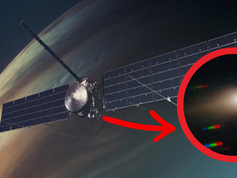Special Forces Captain: 300ft UFO Hovered Over Nuke Base
- Cristina Gomez

- Sep 3
- 3 min read
A former Army Special Forces intelligence officer has revealed details of an extraordinary UAP encounter that occurred over one of America’s most sensitive military installations, exposing troubling gaps in how the Pentagon handles such reports. According to an interview on Reality Check with Ross Coulthart, Captain Caison Best witnessed a massive unidentified object hovering over Cheyenne Mountain on February 15, 2022, just one week before Russia’s invasion of Ukraine.
Best’s credentials distinguish him from typical UAP witnesses. As reported during the interview, he is a West Point graduate, Army Ranger, and Special Forces officer who commanded 65 intelligence personnel as a military intelligence detachment commander for the 10th Special Forces Group at the time of the sighting. His background includes top-secret clearances and extensive experience with military aircraft and surveillance systems, making his testimony particularly credible.

According to Best’s detailed account, they observed “a massive, perfectly still, elliptical object” approximately 300 feet in length hovering motionless over Cheyenne Mountain Complex. The object appeared white in color with uniform pentagonal panels that resembled “mother of pearl or white ceramic,” and displayed no visible means of propulsion while remaining completely silent. Most remarkably, the object vanished instantaneously after at least 30 seconds of observation by all five witnesses.
The location amplifies the significance of this encounter. Reference materials indicate that Cheyenne Mountain Complex, built between 1961 and 1966 at a cost equivalent to $1.5 billion today, serves as NORAD’s alternate command center. The facility can withstand a 30-megaton nuclear blast and sits 2,000 feet inside solid granite, designed to protect North America’s aerospace defense operations. This is where nuclear warfare would be coordinated and where threats to North American airspace are monitored around the clock.
Best eventually reported the incident to AARO (All-domain Anomaly Resolution Office), the Pentagon’s official UAP investigation office. According to his account, AARO’s response was shockingly unprofessional. After waiting months for a reply, Best received what he described as a brief message with typos that simply said “THX-AARO.” Having worked with multiple intelligence agencies and Department of Defense organizations, Best characterized this response as “shockingly unprofessional and unlike any other experience I’d had prior.”
AARO’s analysis concluded that Best and his team had witnessed a surveillance balloon, specifically a PTID system. This explanation fails under scrutiny, as Best noted he had observed these balloons “hundreds of times” during deployments. The object they witnessed was notably larger than typical surveillance balloons, exhibited different behavior, and most critically, vanished instantaneously rather than slowly descending as tethered balloons do. AARO internally nicknamed the encounter the “Crystalline Potato,” according to Best’s testimony.

The contrast with other agencies’ responses proved telling. According to Best’s account, when he connected with FBI investigators through Americans for Safe Aerospace, they conducted formal interviews, brought in sketch artists, and interviewed multiple witnesses including the geospatial intelligence specialists who were present during the sighting. Americans for Safe Aerospace, founded by former Navy pilot Ryan Graves, has become what the organization describes as the world’s largest UAP organization by membership, primarily serving pilots and veterans.
This case raises uncomfortable questions about institutional competence and priorities. While AARO, specifically created to investigate UAPs, provided dismissive responses with basic grammatical errors, the FBI conducted thorough investigations treating the matter as a legitimate national security concern. AARO’s current director, Jon Kosloski, has acknowledged what he terms a “geographic bias” in receiving reports near national security sites, admitting they need to “build a baseline for reference” to understand normal activities near such facilities.
The timing of Best’s encounter during heightened geopolitical tensions mirrors historical patterns. Reference to previous incidents shows similar objects have appeared during other sensitive moments, including over Australia’s Northwest Cape facility during the 1973 Middle East crisis when the United States went to DEFCON 2 (ready for nuclear action). Former Deputy Assistant Secretary of Defense Christopher Mellon has noted that “hundreds of credible military reports remain unexplained and are continuing to pour in,” emphasizing that “the public needs to understand why it is imperative to continue to aggressively investigate UAP for both national security and science.”
Best’s case illuminates fundamental questions about transparency, institutional competence, and national security preparedness when unknown objects operate with apparent impunity over America’s most sensitive facilities.

Sources
In our latest newsletter, we share the UAP experience of Army Special Forces intelligence officer Caison Best. by @SafeAerospace(Americans for Safe Aerospace) | Twitter Thread Reader. (n.d.). Twitter Thread Reader & Converter. https://twitter-thread.com/t/1962970646222180738
NewsNation. (2025, September 2). Former senior intelligence officer finds UAP by Colorado defense bunker | Reality Check [Video]. YouTube. https://www.youtube.com/watch?v=74ud-5Ld48Y















Comments